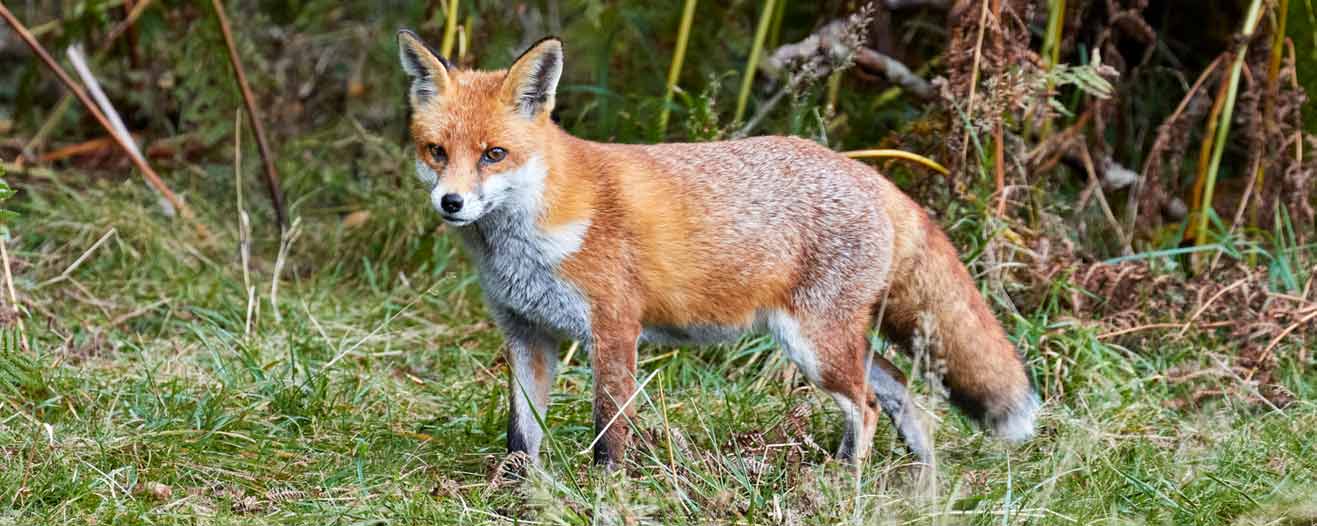- Find a Pet
- Advice and Welfare
- Ways to Give
- Get Involved
- What We Do
- Search
- My RSPCA
- Report a concern
- Sponsor
-
Colour modeVivid Calm
- Home
- Advice and welfare
- Wildlife
- Foxes
Foxes
One of Britain's most popular mammals, foxes are a common sight in both countryside and urban areas. Often found living in towns and cities where houses have large, enclosed gardens. There's usually lots of food available, and plenty of places to shelter, such as under sheds or decking. Other urban areas with fewer open spaces or smaller gardens can still support a population of foxes.

Fox behaviour
Food supply in an area will determine how large a fox territory can grow and how many foxes can live there. Foxes are hugely territorial.
A fox family comprises of:
- The dominant male (dog)
- The female (vixen)
- A litter of cubs
Foxes are scavengers and can eat many types of food. If rubbish isn't properly contained they will take anything they can eat, just as other animals will.
Along with food waste foxes will eat large beetles, other insects, earthworms, small mammals and birds, and fallen fruit. A warm, wet night can provide hundreds of worms that are easily picked off lawns to make a good meal. They may also scavenge from bird tables or compost heaps.

How many foxes are in Britain?
Food supply in an area will determine how large a fox territory can grow and how many foxes can live there. Foxes are hugely territorial.
Road traffic accidents are the main cause of fox deaths. Fox culling, disease outbreaks and limited food sources will also impact how big populations can grow in an area.
How common are black foxes in the UK?
It's possible but rare, to see foxes with grey or black coats in the wild in Britain (also called silver foxes). Black foxes could be the descendants of foxes bred for the fur trade and released into the wild many years ago. Others could have escaped from captivity and continued to survive in the wild.




